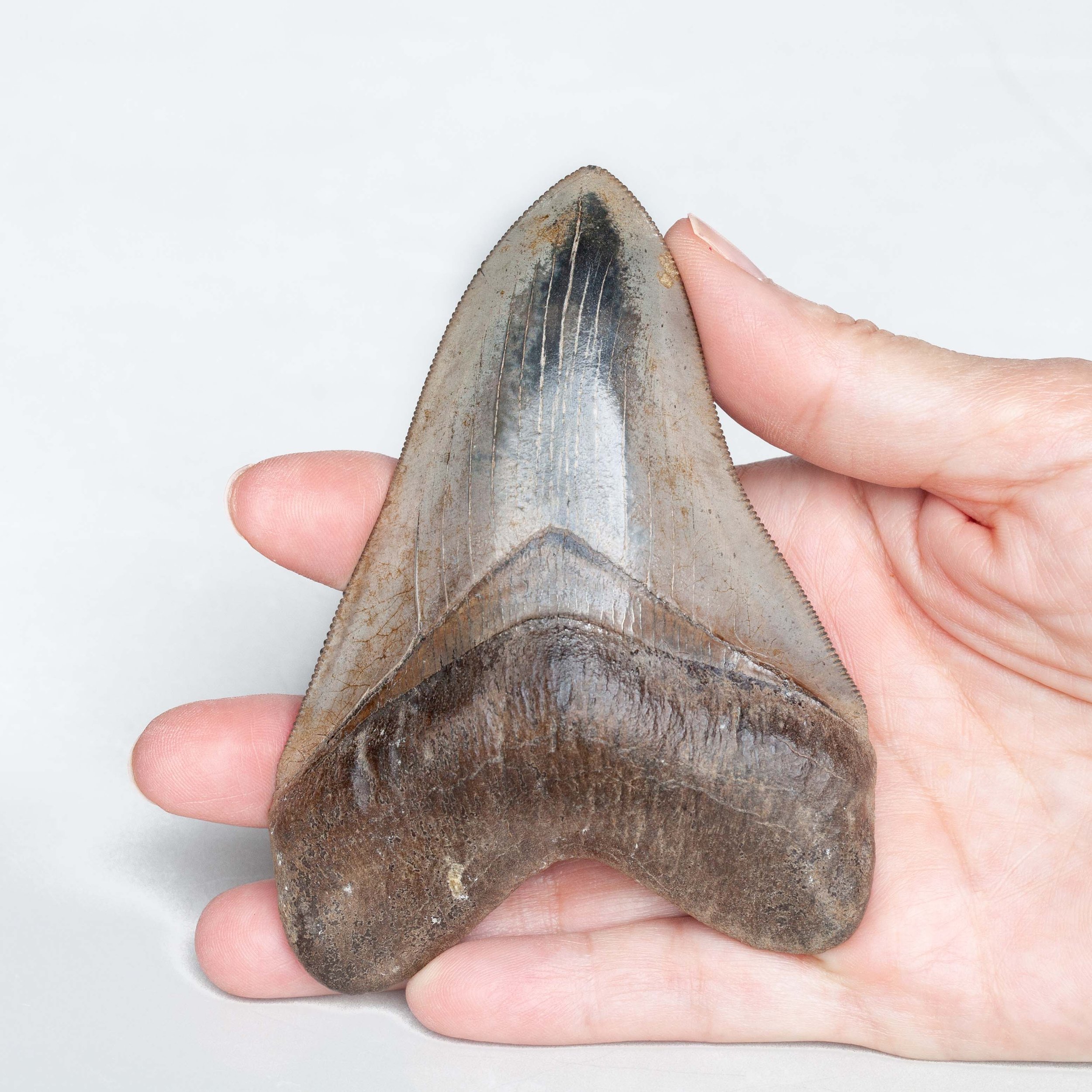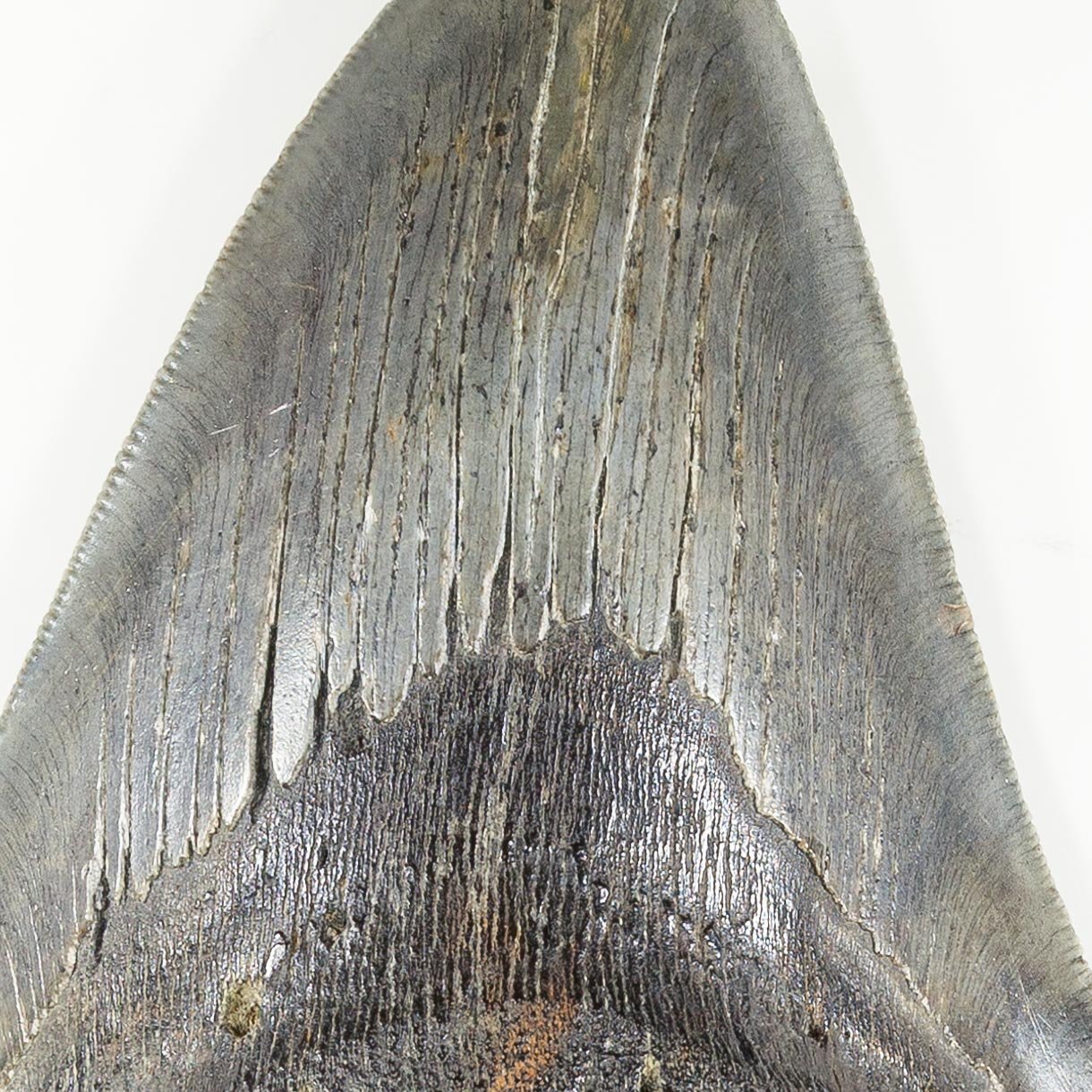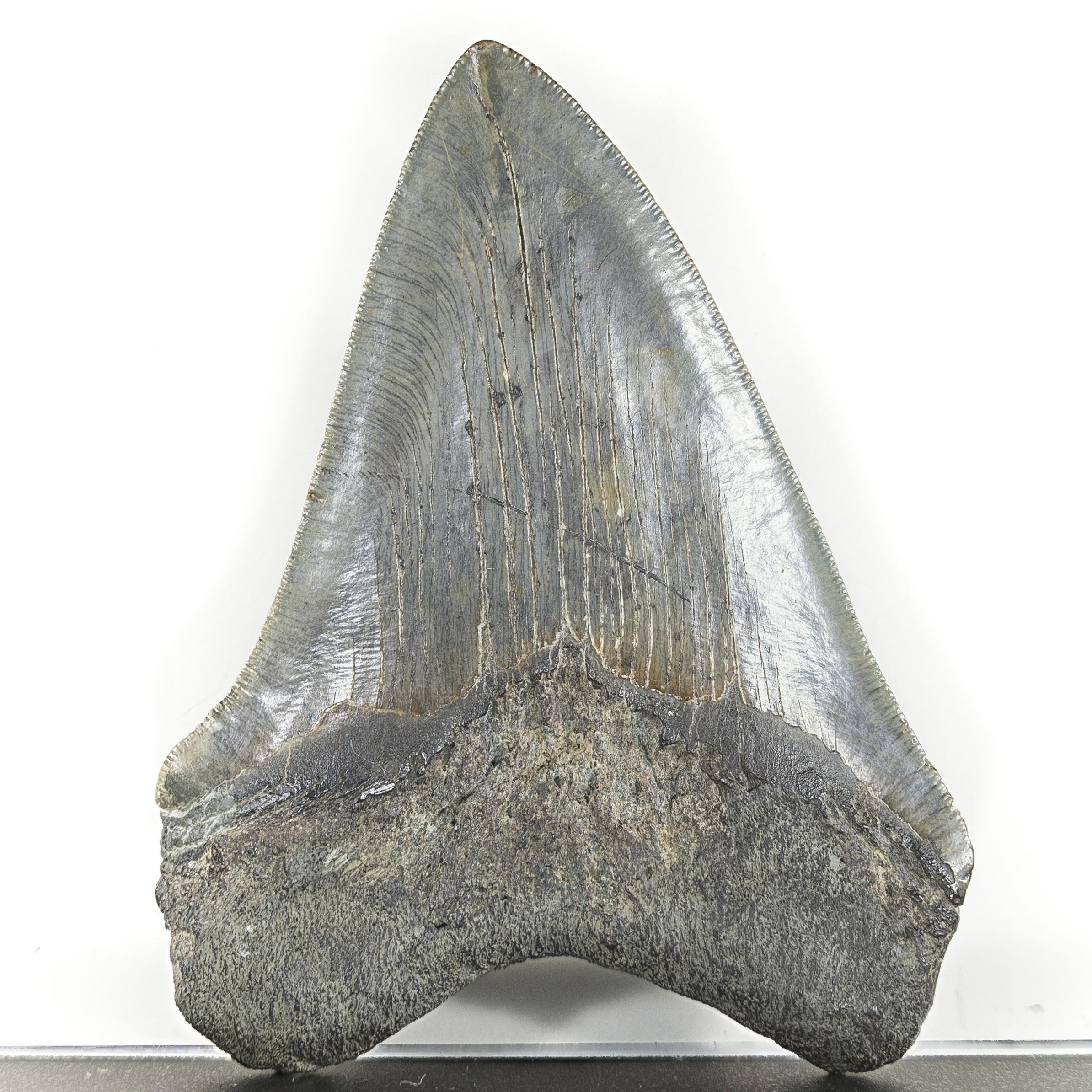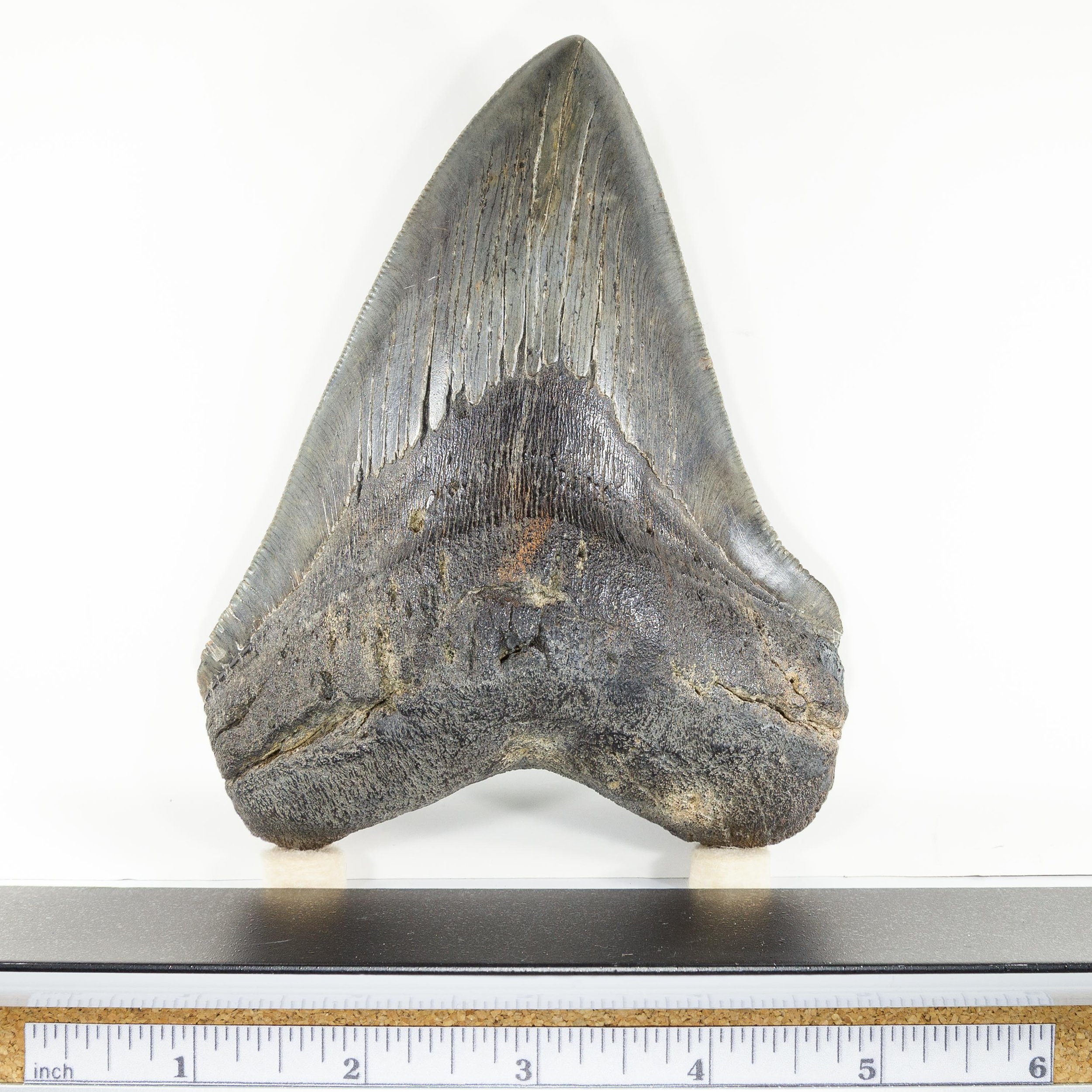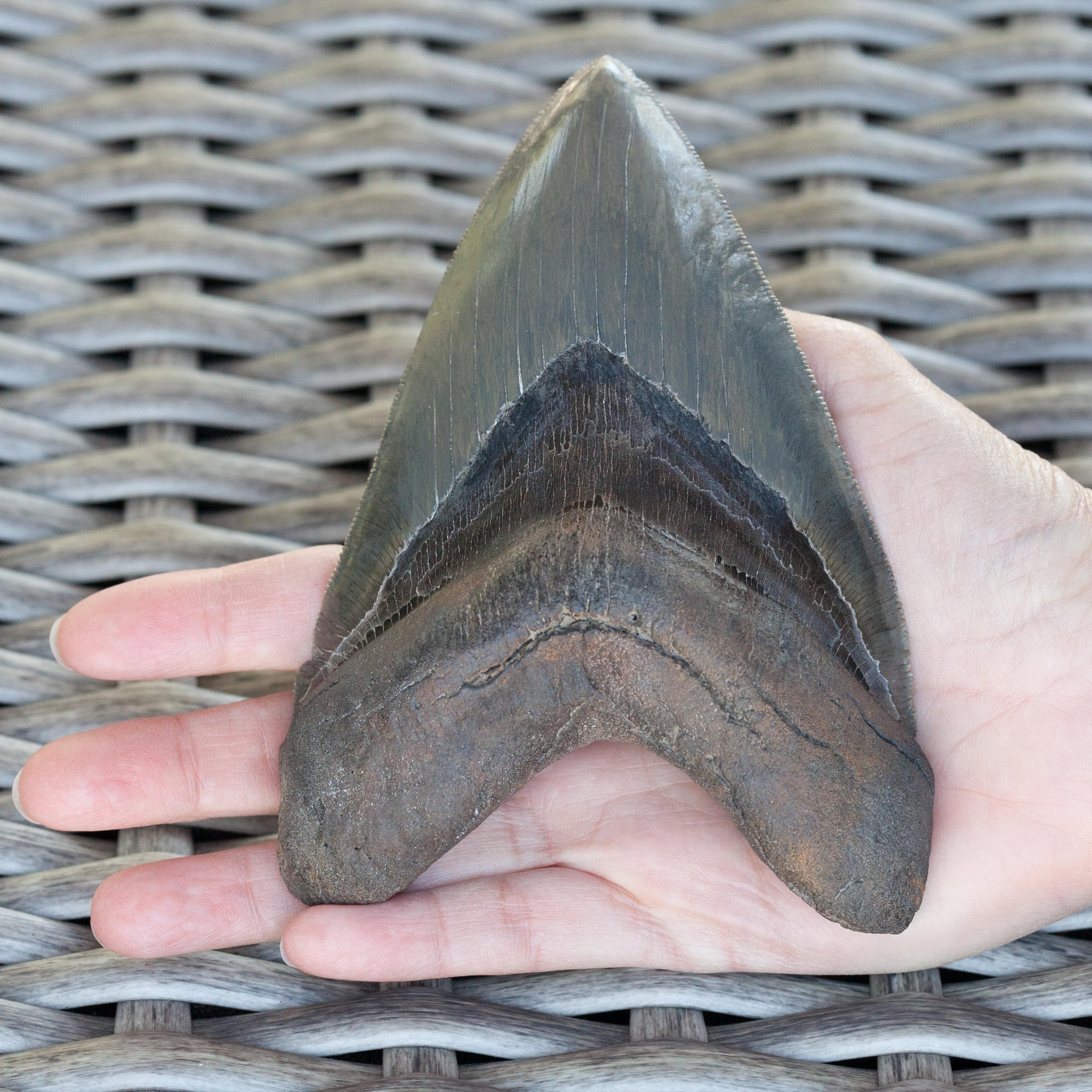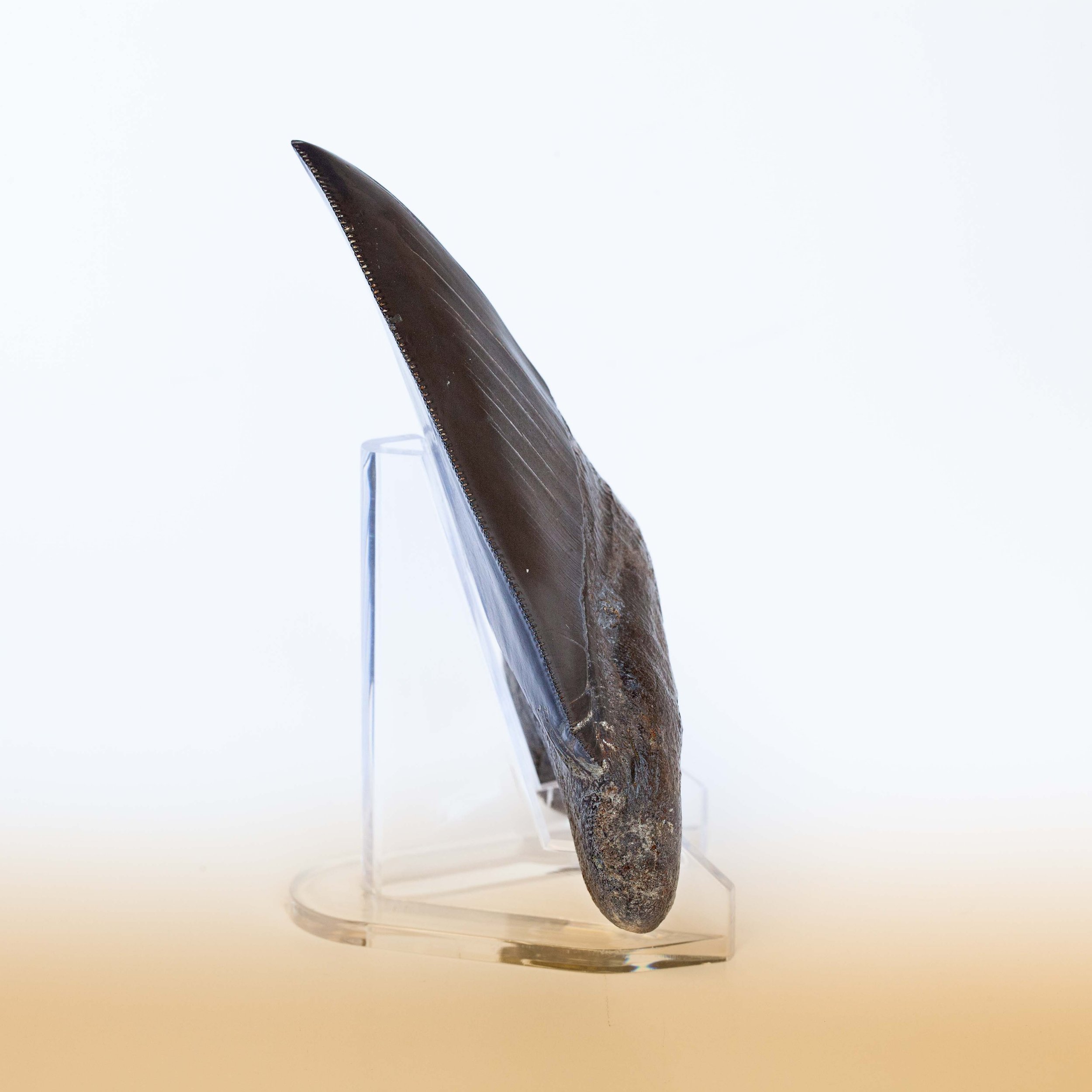Carcharocles megalodon
Vendor: Fossil Soup
SKU Number: SQ3235135
Carcharocles megalodon is an extinct species of shark that had world-wide distribution during the Miocene period. It is widely regarded as one of the most powerful predators to have lived in the ocean and grew to be around 45 feet in size with the largest teeth measuring up to 7+ inches.
This is a beautiful orange-red lateral near-posterior tooth from the Inter-coastal waterway near Savannah, Georgia. The crown is nicely enameled on both the labial and lingual sides (lip and tongue facing) and the denticles on the carinae (the serrations) on both the mesial and distal edges are nicely preserved.
There is no restoration or repair to this tooth
Full dimensions are listed below
The length from the tip to the bottom of the root on the left side is: 3.52 inches
The length from the tip to the bottom of the root on the right side is: 3.27 inches
The width is: 2.84 inches
The depth is: 0.85 inches
Vendor: Fossil Soup
SKU Number: SQ3235135
Carcharocles megalodon is an extinct species of shark that had world-wide distribution during the Miocene period. It is widely regarded as one of the most powerful predators to have lived in the ocean and grew to be around 45 feet in size with the largest teeth measuring up to 7+ inches.
This is a beautiful orange-red lateral near-posterior tooth from the Inter-coastal waterway near Savannah, Georgia. The crown is nicely enameled on both the labial and lingual sides (lip and tongue facing) and the denticles on the carinae (the serrations) on both the mesial and distal edges are nicely preserved.
There is no restoration or repair to this tooth
Full dimensions are listed below
The length from the tip to the bottom of the root on the left side is: 3.52 inches
The length from the tip to the bottom of the root on the right side is: 3.27 inches
The width is: 2.84 inches
The depth is: 0.85 inches
Vendor: Fossil Soup
SKU Number: SQ3235135
Carcharocles megalodon is an extinct species of shark that had world-wide distribution during the Miocene period. It is widely regarded as one of the most powerful predators to have lived in the ocean and grew to be around 45 feet in size with the largest teeth measuring up to 7+ inches.
This is a beautiful orange-red lateral near-posterior tooth from the Inter-coastal waterway near Savannah, Georgia. The crown is nicely enameled on both the labial and lingual sides (lip and tongue facing) and the denticles on the carinae (the serrations) on both the mesial and distal edges are nicely preserved.
There is no restoration or repair to this tooth
Full dimensions are listed below
The length from the tip to the bottom of the root on the left side is: 3.52 inches
The length from the tip to the bottom of the root on the right side is: 3.27 inches
The width is: 2.84 inches
The depth is: 0.85 inches
Additional Information
Carcharocles megalodon is an extinct species of shark that lived approximately 23 to 3.6 million years ago (Mya), from the Early Miocene to the Pliocene epochs. It was formerly thought to be a member of the family Lamnidae and a close relative of the great white shark (Carcharodon carcharias). However, it is now classified into the extinct family Otodontidae, which diverged from the great white shark during the Early Cretaceous. While regarded as one of the largest and most powerful predators to have ever lived, the C. megalodon is only known from fragmentary remains, and its appearance and maximum size are uncertain. Though popularly referred to as “Megalodon”, this name is in fact a species name and not the genus name - somewhat comedic when you consider that Megalodon is an extinct genus of bivalve mollusks that lived from the Devonian to the Jurassic period.
Unlike fishes with bony skeletons, a shark's skeleton is made out of cartilage. This is a flexible but strong connective tissue that's also found throughout the human body, in places like the nose, ears, and in joints between bones. The light weight of cartilage allows sharks to stay afloat and swim long distances without consuming large amounts of energy. The downside is that cartilage does not fossilize easily and we can only make assumptions about the complete morphology of C. megalodon based on extant species and those few partially fossilized remains that have been found.
Shark teeth are composed of calcium phosphate, a form of apatite. Although shark teeth are sturdier than the cartilage that makes up their skeleton, the teeth still disintegrate over time unless they are fossilized. This is why you rarely find white shark teeth on a beach. Shark teeth are preserved if the tooth is buried, which prevents decomposition by oxygen and bacteria. Shark teeth buried in sediments absorb surrounding minerals, turning them from a normal whitish tooth color to a deeper color, usually black, gray, or tan. The fossilization process takes at least 10,000 years, although some fossil shark's teeth are millions of years old! Fossils are old, but you can't tell the approximate age of a shark tooth simply by its color because the color (black, gray, brown) depends completely on the chemical composition of the sediment that replaced the calcium during the fossilization process.
MegalodonWhy Shark Teeth are Black









